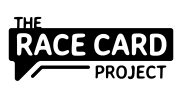Mark Ross,
California, CA.
These issues are complex. Stereotypes (or action using information from stereotype) are based often enough on at least some modicum of reality (authentic or perceived).
The wrong view
As an African-American male, I have been unduly perceived as a threat. That suspicion has been acted upon several times by government authority, e.g., I have been stopped several times by police , and on one occasion arrested by my (then) city’s police, only to be later exonerated and sent an apology by the Assistant D.A. of Alameda County, CA.
I once overheard a conversation by the owner of the house I was renting a room from as an summer engineering intern in a new city. The friend’s of the owner asked, “I see you have a Black guy renting a room, Is he ‘all right’?”. I’ve never been “told” by anyone that I did not conduct myself and present myself in a upstanding manner, so why shouldn’t I have been perceived as “all-right”
I’ve been called “nigger”, spit upon, and experienced many other indignities, all in California (and several in the San Francisco Bay Area), where people are supposed to be (even stereotyped) to be more “enlightened”.
The often wrong, but sometimes right, and often somewhat right view.
Seen (or scene) on the street: The male (and less often female) teen walking down the street with a large group of friends, late for a school night, cussing, with sagging pants, and maybe with a lit “Philly Blunt” in his hand (Thought(conscious or unconscious): This person may not have enough positive things going on in his life.)
I’m walking on the sidewalk on the same side of the street. I say to myself, “Dang, here it is again – too often I see the same thing: young brothas (brothas for me, maybe Black men for you (or something derogatory for others)) on the street, not necessarily up to no good, but too often, not up to much.” We pass on the street (the group and me). I make sure I look them in the eye assertively (“just to let them know”) while walking with a little extra projected confidence.
Should I have not exercised a little more caution by making eye contact and walking confidently? I think I’d be a unwise not to. I’m not afraid of the teens, but I am making a judgment that lean slightly to the negative out of prudence.As practice of “street knowledge”, I do the same thing for all groups of people, and I adjust depending on how “directed” the group looks; Do they look like they’re walking with a destination? If not, I have greater cautious, focus.
The ambivalent view
Once I was sent by tutoring agency to tutor a student privately in a home. The owner of the agency felt compelled (although uncomfortably) to tell the parent of the student that I was “a person of color”. The owner (who is White) briefly shared her discomfort in feeling it necessary to divulge my color to the client (who is White) with me. It was clear to both of us that she would not have mentioned color at all if I was a White person (I wonder if she would have done so if I looked Japanese or Indian?). Was it necessary? What did my color have to do with my academic knowledge or skill in instruction? Objectively, my color had not relation to my ability, however I’ve seen the sudden look of surprise by some White people when they see my color for the first time. Was the owner’s action right or wrong? I’m not sure. Certainly from a business point of view, the fewer the surprises the better, but on the other hand, whose responsibility is it to manage their stereotypes, biases, and prejudices? From my point of view, as long as I don’t degrade myself, sometimes for my immediate self-interest, and certainly for the greater good, it is sometimes prudent for me to help people more comfortably manage their stereotypes, biases, and prejudices.
The analysis (or lack thereof)
How do you exercise your judgment? Where do you exercise your judgment? (In the daytime?, In a low crime area?, On the street, late at night? In the elevator at the medical building? When seated next to someone in the lobby a you wait for a table at a restaurant?)Do you think an area is less “bad” because it has more non-ethnically described White people when matched with a comparable area with more Black people?, Brown-skinnned Latinos?, “Yellow-skinned” Asians, “Brown-skinned” South-Asians, “White skinned” Ukrainians, or Italians? (Examine your views even if you are a “person of color”).How much of your judgment is influenced by fear, bias, prejudice, or racism? Do you confront your fear, bias, prejudice, or racism? Do you even want to confront these issues? If so, what safe, comfortable resources can you access to do it?
Applied to the Trevon Martin incident in Florida (and many similar incidents)
I wonder what analysis regarding fear, bias, prejudice, or racism did Mr. Zimmerman undertake before going out with his neighborhood watch group. Similarly what analysis did the members of his group undertake individually and as a group before going out? How racially and experientially diverse is his neighborhood watch group?
Given that police departments across the nation and around the world have significant challenges managing shootings, especially those where racial bias is considered a possible factor, why was it seen as wise that a group with much less training than a police officer go out on patrol with side arms? All people have pre-dispositions, but training, and being accompanied by trained colleagues can counteract biases and result in fairer outcomes. It seems that instead of identifying and reporting potential problems to the police, Mr. Zimmerman took aggressive action based on his judgment of the problem (a tragic judgment of “a problem” that resulted in the use of deadly force by a civilian that killed a precious unarmed youth returning from home with snack food).
Failure to analyze and confront has resulted in too many tragedies, everywhere, and certainly disproportionately in one statistical group of note: African-American males.
“Wake-up, Everybody”:
Think about how you think, and what you think about parents and communities: Let’s get our kids and keep our kids in positive activities, emulating positive things in speech, thought, and yes, even in appearance (not necessarily in conformance to someone else’s ideas of appearance, however, although one should not “judge a book by its cover” the cover can be a strong indicator of a need for guidance regarding what’s being constructed on the inside) (Note: no one should be shot or harassed because of how they are dressed. Also, the way one is dressed does not mean one is a criminal, nor does it mean one has the responsibility for managing another’s perception of them because of how they are dressed, however (apparently not the case of Trevon, with his simple hoodie), when people dress in emulation of “gangsta” styles, a negative, perhaps somewhat fearful view, is enhanced for some. As an African-American wanting the best for all people, and in particular people of my ethnicity, I want positive advancement in all areas and the disappearance of all obstacles to our self-realization. Parents and leaders other than media and popular cultural, can have an important role in what influences our children too – as a matter of fact, parents and positive leader should be the main filters of these influence






